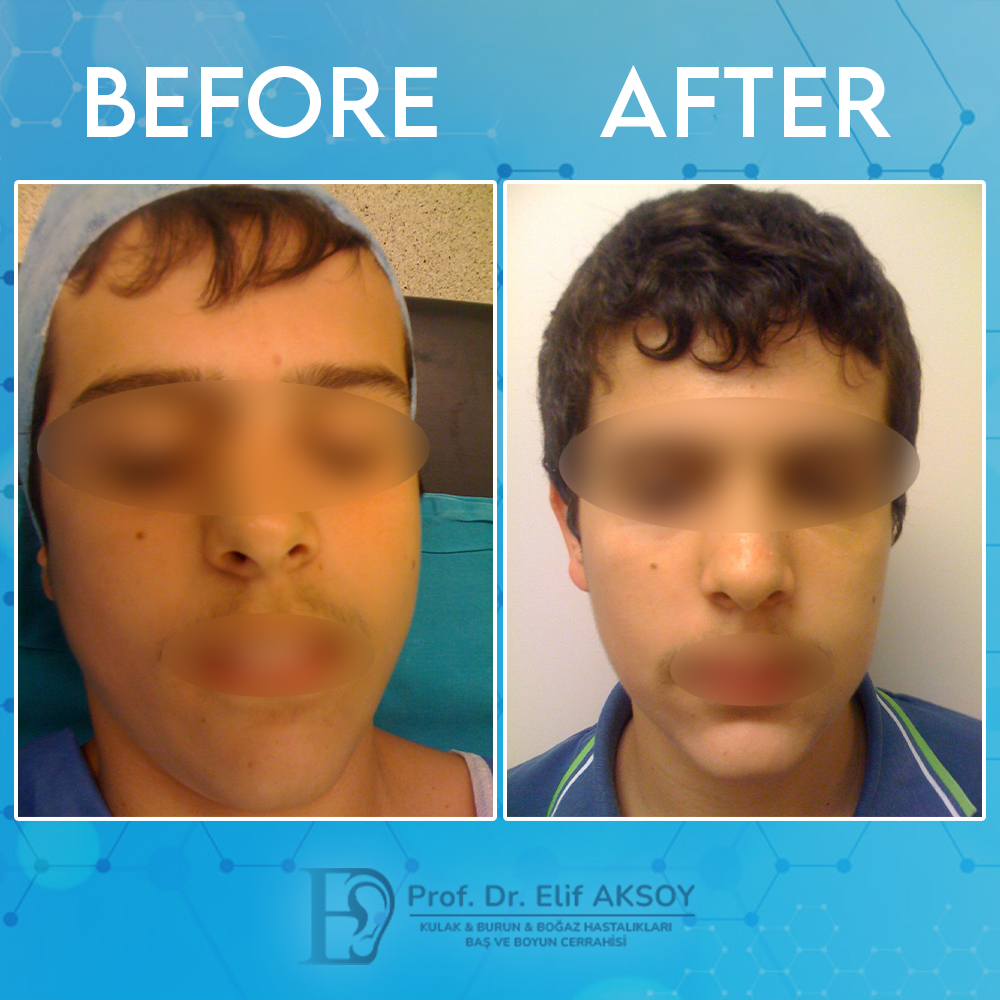Nasal Fracture (Broken Nose): What Is It?
A nasal fracture is a break or crack in the nasal bones and is the most common type of facial bone fracture. The nose is one of the most protruding and delicate structures of the face, making it highly vulnerable to trauma.
Falls, blows, sports injuries, traffic accidents, or physical altercations can cause cracks or complete fractures in the nasal bones. If not treated promptly and correctly, nasal fractures can lead to permanent deformities and breathing difficulties.
Symptoms of a Nasal Fracture
The symptoms of a nasal fracture may vary depending on the severity of the trauma. Common symptoms include:
- Pain and tenderness around the nose
- Swelling and bruising around the nasal bridge (may extend under the eyes)
- Visible deformity or asymmetry in nasal shape
- Depression or displacement of nasal bones
- Nasal congestion or difficulty breathing
- Nosebleeds
- Palpable bone fragments under the skin
- Crepitus (grating sound of bones rubbing together)
Crepitus, in particular, is a significant clinical finding that indicates a fracture. If any of these symptoms are present, it is important to consult an ENT specialist as soon as possible.
Diagnostic Methods for Nasal Fracture
The most important methods for diagnosing a nasal fracture are physical examination and medical history. Additionally, in complex or suspicious cases, imaging techniques may be used:
Physical Examination: Assessment of nasal shape, mobility, and fracture signs.
X-ray: A basic imaging method, but may not reveal all fracture details.
CT Scan: Provides a detailed view of bone structures and is used for accurate diagnosis in complex cases.
Treatment of Nasal Fracture
Early intervention is crucial in nasal fractures. If treated within the first few hours before swelling develops, the fracture can be corrected more easily. However, due to swelling, correction is usually performed within 3–5 days.
In children, bone healing begins around day 7–10; in adults, it starts within 10–14 days. Therefore, treatment should not be delayed.

Mild and Non-Displaced Fractures:
- If the fracture is mild and the nasal shape remains intact, medical management and nasal protection may be sufficient.
- Cold compresses can be applied to reduce swelling and pain.
Closed Reduction:
- If bone fragments are displaced but the fracture is recent, closed reduction can be performed to reposition the bones.
- This procedure is typically done under local or general anesthesia.
Surgical Intervention (Open Reduction):
- In severe nasal fractures, collapsed nasal bones, or structural deformities, surgery (septorhinoplasty or osteotomy) may be required.
- This procedure corrects both functional and cosmetic concerns.
Post-Treatment Care for Nasal Fractures
- Apply cold compresses during the first 48 hours to reduce swelling.
- Avoid blowing your nose (may cause bleeding or air leakage).
- Refrain from strenuous exercise or activities that risk facial trauma.
- Sleep with your head elevated (helps reduce swelling).
- Do not insert cotton, tissues, or any foreign objects into the nose.
- You may use nasal moisturizers or doctor-prescribed ointments as needed.
Conclusion
Nasal fractures are among the most common facial fractures. When diagnosed early and treated appropriately, they can heal without permanent damage. However, if left untreated, they may lead to nasal deformity, breathing issues, or chronic nasal obstruction.
If you notice a change in your nasal shape, experience persistent nasal bleeding, or have difficulty breathing after trauma, consult an ENT specialist immediately.
Prof. Dr. Elif Aksoy
ENT Specialist – Swallowing and Voice Disorders


